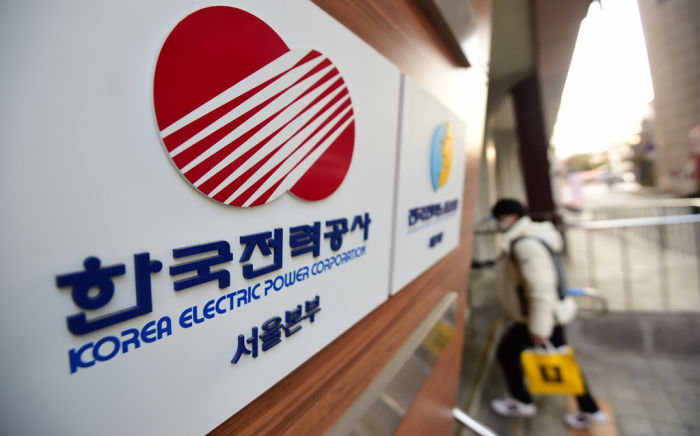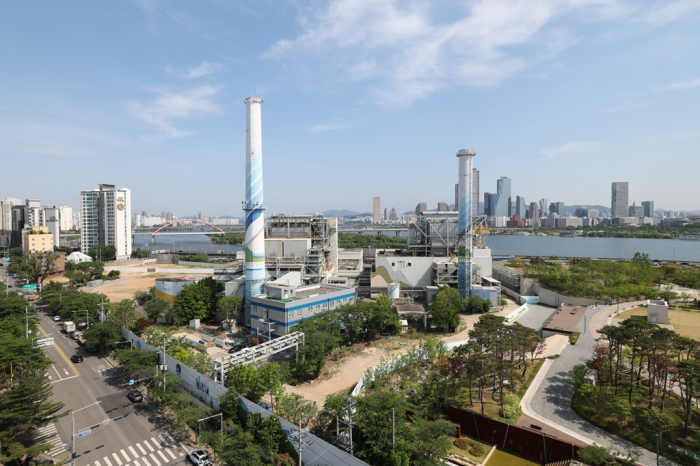Energy
S&P lowers KEPCO’s stand-alone credit rating to non-investment grade
A significant increase in fuel costs and a cap on electricity tariffs will likely result in large losses for the power utility
By May 27, 2022 (Gmt+09:00)
2
Min read
Most Read
LG Chem to sell water filter business to Glenwood PE for $692 million


Kyobo Life poised to buy Japan’s SBI Group-owned savings bank


KT&G eyes overseas M&A after rejecting activist fund's offer


StockX in merger talks with Naver’s online reseller Kream


Mirae Asset to be named Korea Post’s core real estate fund operator



Standard & Poor's (S&P), an international credit rating agency, has lowered Korea Electric Power Corp.'s stand-alone credit profile to non-investment grade, citing worsening profitability due to a government-imposed cap on power rates.
A significant increase in fuel costs and a cap on electricity tariffs will likely result in large operating losses for KEPCO, South Korea’s power utility, over the next 12 months, the ratings agency said in a recent report.
Such adverse conditions, together with the power company’s continued investments to shift its capacity mix, should lead to rapid debt growth and weaker financial metrics, it said.
“We revise down our assessment of KEPCO’s stand-alone credit profile to 'BB+' from 'BBB-' to reflect likely operating losses in 2022 and 2023,” S&P said.
S&P’s investment-grade ratings are from “BBB-” to “AAA.”
KEPCO posted its largest-ever operating loss of 5.9 trillion won ($4.9 billion) in 2021 after it froze electricity rates for almost eight years.

Its price freeze was largely due to the government policies aimed at curbing inflation and supporting pandemic-hit households and small businesses.
In the first quarter of this year, the company’s operating loss ballooned to a quarterly record of 7.79 trillion won as it was unable to pass on higher fuel costs to consumers.
While the new government of President Yoon Suk-yeol has yet to unveil any material measures to compensate for KEPCO’s growing losses, the company recently announced a 6 trillion won cost-cutting and asset-sale plans.
Such measures, however, will likely be insufficient given the significant cost burden, according to the ratings agency.
SHORT & LONG-TERM RATINGS SAME AS KOREA’S SOVEREIGN
Despite its lowering of KEPCO’s stand-alone credit profile to non-investment grade, S&P has maintained the company’s short-term and long-term credit ratings to those on the Korean government.
It affirmed its “AA” long-term and “A-1+” short-term issuer credit ratings on KEPCO, while maintaining its “AA” long-term issue ratings on the company’s senior unsecured notes.
“We continue to see an almost certain likelihood of extraordinary support for KEPCO,” S&P said.
Korea Electric is the sole provider of electricity transmission and distribution in Korea.
The company generates 70-75% of the country’s power supply, mostly through its six power generation subsidiaries.
Write to Hyun-Ju Jang at blacksea@hankyung.com
In-Soo Nam edited this article.
More to Read
-
 Business & PoliticsKorea’s Yoon govt to raise nuclear power to 34% of energy source
Business & PoliticsKorea’s Yoon govt to raise nuclear power to 34% of energy sourceApr 21, 2022 (Gmt+09:00)
3 Min read -
 EarningsKEPCO at record loss on fuel costs; wider losses seen in 2022
EarningsKEPCO at record loss on fuel costs; wider losses seen in 2022Feb 25, 2022 (Gmt+09:00)
2 Min read -
 Carbon neutralityKEPCO to develop subsea transmission for ADNOC
Carbon neutralityKEPCO to develop subsea transmission for ADNOCDec 23, 2021 (Gmt+09:00)
1 Min read -
 KEPCO set to finance $190 mn for Vietnam’s coal power plant project
KEPCO set to finance $190 mn for Vietnam’s coal power plant projectOct 05, 2020 (Gmt+09:00)
3 Min read
Comment 0
LOG IN


